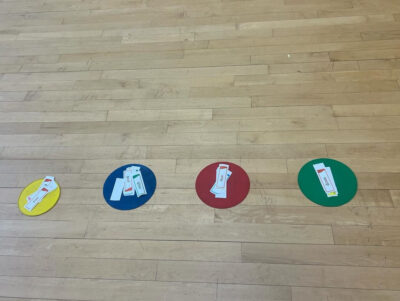To celebrate Children’s Mental Health Week 2024, we’ve teamed up with Danika Williams for an inspiring blog post promoting cross-circular links, particularly exploring positive well being through physical education, and how you can incorporate Monster Phonics.
Physical education is vital in promoting an individual’s mental health and wellbeing. My name is Danika Williams, and I am a PE, PSHE, Mental Health and Well-being Lead with over 12 years of experience in the education sector.
When we engage in physical activities, our brain releases chemicals that bump up the production of your brain’s feel-good neurotransmitters, called endorphins. These are crucial for an individual’s mental health and wellbeing.
Regular physical activity is crucial for maintaining good health. Physical education should motivate and stimulate children and young individuals to help them appreciate the pleasure of movement, cultivate positive attitudes as individuals and as part of a group, and improve their quality of life through a healthy lifestyle.
When we engage in physical activities, our brain releases chemicals that elevate our mood, leading to better self-esteem, focus, quality of sleep, and overall wellbeing. Scientific studies have proved that spending time in nature can make us happier, feel more fulfilled, and reduce our levels of depression and anxiety. It can also improve our mood, self-esteem, and ability to concentrate and sleep well.
I have created engaging, educational warm-up lessons for KS1 children that make cross-curricular links. I have successfully incorporated the Monster Phonics monsters into my Physical Education lessons and have noticed opportunities to use word cards actively and practically during class movement breaks and PE lessons.
I have developed games such as Hide-and-Seek, Feed the Monster, and Save the Monster to keep the children engaged. These games encourage children to locate word cards and return them to the correct Monster, use their house team system to collect the correct word cards and place them in the appropriate bucket with the Monster attached. I have also created Save the Monster, where children must run to the centre of the room, collect a card, and sound it out to an adult. If they get it right, the Monster is saved.
In my PE lessons, I have used a simple activity called ‘Spell Your Word’, where each alphabet letter is assigned an exercise action. I have successfully adapted this activity to ‘Get Fit with Monster Phonics’, where the children select a word card and complete the corresponding exercise action while spelling out their chosen word.
As the lead for Physical Education (PE), I am always on the lookout for new and innovative ways to establish connections across different subjects. In this regard, I have found that Monster Phonics is an extremely engaging and fun way to support children with their phonics learning. The program uses a variety of monster characters, which children find child-friendly and appealing. By incorporating movements and actions, children can enhance their knowledge and understanding of the subject.
The integration of Monster Phonics in PE lessons has been particularly beneficial for kinaesthetic learners, as it has helped them to make solid connections between what they learn in PE lessons and what they learn in the classroom. Furthermore, teachers can adapt their teaching methods to suit the needs of all learners. For those who are working below-age-related expectations, the colour-coded word cards can be used. However, teachers can also adapt this by having the word cards non-colour-coded while still completing one of the active games.

Moving and learning are essential for the all-round development of children, including their social, emotional, and cognitive skills. It is a fact that it helps them become physically literate and enhances their cognitive function. Active learning has been proven to enhance motivation, aid in neurogenesis, and improve information retention. Moreover, active learning is crucial for children to develop vital life skills. Our school has integrated Monster Phonics into our curriculum, and students are exposed to it daily. They find the practical aspects of the Monster Phonics lessons thoroughly enjoyable, whether through active breaks or physical education classes. In particular, the phonics warm-ups during PE are a real hit with the students, and it is truly gratifying to witness them wholeheartedly engaging with the learning process while having fun and being physically active.
By integrating physical activity with educational games like those Danika Williams has developed, we can promote positive well-being through movement and learning.
If you’re interested in learning more about Danika’s approach or have any questions about incorporating Monster Phonics into your PE lessons, feel free to reach out to Danika at D.stlouishamilton@peartreespring.herts.sch.uk or through social media.
Let’s celebrate Children’s Mental Health Week 2024 by nurturing both the minds and bodies of our students.